
Journal of Structural Fire Engineering
Scope & Guideline
Exploring the intersection of resilience and engineering.
Introduction
Aims and Scopes
- Fire Performance of Structural Materials:
This area investigates how different materials, such as concrete, steel, and composite materials, respond to fire exposure, including their mechanical properties and failure mechanisms. - Numerical and Experimental Analysis:
The journal emphasizes both numerical simulations (e.g., finite element analysis, computational fluid dynamics) and experimental studies to evaluate structural behavior under fire conditions. - Fire Protection Techniques:
Research includes the development and evaluation of fire protection methods, such as intumescent coatings and hybrid materials, aimed at enhancing the fire resistance of structural systems. - Post-Fire Assessment:
This involves examining the residual strength and behavior of structures after fire incidents, including the assessment of damage and rehabilitation strategies. - Innovative Structural Systems:
The journal also explores new and innovative structural designs and materials that improve fire resistance and overall structural performance in the event of a fire.
Trending and Emerging
- Behavior of Composite and Hybrid Structures:
An increasing number of studies are addressing the fire performance of composite and hybrid structures, highlighting the need for understanding complex interactions between different materials under fire exposure. - Advanced Simulation Techniques:
The use of sophisticated numerical methods, such as machine learning and artificial intelligence in fire modeling, is gaining traction, indicating a shift towards more data-driven approaches in structural fire engineering. - Sustainability in Fire Engineering:
Research focusing on sustainable materials and construction practices, including the use of recycled and low-carbon materials, is becoming more prevalent, reflecting broader environmental concerns in engineering. - Post-Fire Behavior and Recovery:
There is a growing interest in understanding the post-fire behavior of structures, including rehabilitation strategies and the assessment of residual capacities, as urban environments face increased fire risks. - Fire Risk Assessment and Management:
Emerging themes include comprehensive risk assessment methodologies that incorporate fire dynamics, structural vulnerabilities, and mitigation strategies, highlighting a more proactive approach to fire safety.
Declining or Waning
- Traditional Concrete Fire Resistance Studies:
There has been a noticeable decrease in studies solely focused on traditional concrete fire resistance, as researchers increasingly explore alternative materials and advanced composites. - General Fire Safety Practices:
Research that addresses general fire safety practices without a strong emphasis on structural performance is becoming less frequent, as the journal shifts towards more specialized and technical investigations. - Single-Material Studies:
There is a trend away from studies that focus on a single material's fire performance, with a growing emphasis on multi-material systems and their interactions in fire scenarios.
Similar Journals
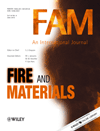
FIRE AND MATERIALS
Advancing Safety Through Material InnovationFIRE AND MATERIALS, published by Wiley, is a prestigious journal that provides a vital platform for the dissemination of high-quality research in the fields of materials science and engineering, particularly focusing on the complex interactions between fire and various materials. With an ISSN of 0308-0501 and an E-ISSN of 1099-1018, the journal boasts a commendable impact factor ranking in the top quartiles for multiple categories, including Ceramics and Composites, Chemistry (Miscellaneous), and Electronic, Optical and Magnetic Materials. The journal’s robust Scopus ranks reflect its influence in the materials science community, with a notable position in the 75th percentile for Metals and Alloys. Although Open Access is not an option, the journal ensures wide accessibility and readership within the academic and professional spheres. FIRE AND MATERIALS serves as an essential resource for researchers, professionals, and students interested in the behaviors of materials under thermal stress, contributing significantly to advancements in safety and performance in diverse applications.
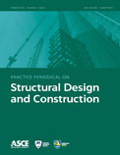
Practice Periodical on Structural Design and Construction
Pioneering Research for Tomorrow's InfrastructurePractice Periodical on Structural Design and Construction, published by the American Society of Civil Engineers (ASCE), is a vital resource within the fields of civil and structural engineering. With an ISSN of 1084-0680 and an E-ISSN of 1943-5576, this journal aims to disseminate innovative research and practical applications that enhance the design and construction process. Recognized in the 2023 Scopus rankings with commendable placements across categories, including a Q2 designation in Building and Construction, this journal serves as a platform for discourse on the latest advancements and case studies in structural engineering. Though not an Open Access publication, it continues to facilitate the exchange of knowledge and expertise among researchers, professionals, and students engaged in the built environment. The editorial board encourages submissions that contribute to the understanding of sustainable practices, innovative technologies, and effective construction methodologies to meet the evolving needs of infrastructure development.
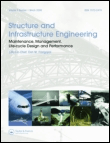
Structure and Infrastructure Engineering
Driving Safety and Reliability in Engineering DisciplinesStructure and Infrastructure Engineering, published by TAYLOR & FRANCIS LTD, is a premier academic journal that serves as a vital resource in the fields of engineering and construction. Featuring an ISSN of 1573-2479 and an E-ISSN of 1744-8980, this journal has established its reputation as a leader in disseminating high-quality research. Since its inception, it has successfully transitioned through converged years from 2007 to 2024, earning a prestigious position within the Q1 quartile across multiple engineering disciplines, including Building and Construction, Civil and Structural Engineering, and Ocean Engineering, among others. Its impact is underscored by impressive Scopus rankings, particularly its 5th rank in Ocean Engineering within the top 95th percentile. The journal’s commitment to advancing knowledge in safety, risk, reliability, and quality makes it an indispensable platform for researchers, professionals, and students aiming to stay at the forefront of engineering innovations. Access to its comprehensive articles allows for a deeper understanding of contemporary challenges and solutions in infrastructure development.
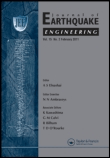
JOURNAL OF EARTHQUAKE ENGINEERING
Pioneering research for resilient structures.JOURNAL OF EARTHQUAKE ENGINEERING, published by TAYLOR & FRANCIS LTD, stands as a pivotal resource in the fields of Building and Construction, Civil and Structural Engineering, and Geotechnical Engineering. With an impressive Q1 ranking in multiple categories for 2023, this journal is instrumental for researchers, professionals, and students committed to advancing knowledge in earthquake engineering and its practical applications. As a platform that spans the years from 1997 to 2024, it highlights significant contributions to safety, risk, reliability, and quality in engineering practices. While the journal operates on a subscription basis, its highly regarded articles, bolstered by robust Scopus rankings—such as rank #46 in Building and Construction—underscore its credibility and influence in shaping standards and methodologies within the discipline. Promoting innovative and evidence-based approaches, the JOURNAL OF EARTHQUAKE ENGINEERING is essential reading for anyone engaged in the science and technology of earthquake-resistant structures.
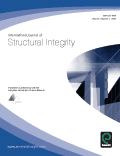
International Journal of Structural Integrity
Pioneering Research for Structural Integrity and InnovationInternational Journal of Structural Integrity is a premier peer-reviewed academic journal published by EMERALD GROUP PUBLISHING LTD in the United Kingdom. As a valuable resource in the fields of Civil and Structural Engineering, Mechanical Engineering, and Mechanics of Materials, this journal serves to advance knowledge and foster innovation in these critical areas of study. With an impressive impact factor reflected in its 2023 category quartiles, ranking Q2 across multiple engineering disciplines, the journal is recognized for its contributions to research and practical application. Researchers can benefit from its rigorous publishing standards that encompass a wide array of interdisciplinary topics pertaining to structural integrity. Accessing the journal is facilitated for those seeking high-quality research and findings, vital to both academia and industry. Since its inception in 2010 and extending until 2024, the journal continues to attract scholarly articles that push the boundaries of engineering knowledge, making it an essential platform for professionals, students, and researchers seeking to stay at the forefront of structural engineering."
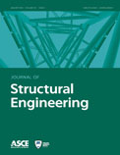
JOURNAL OF STRUCTURAL ENGINEERING
Advancing the Foundations of Structural InnovationThe JOURNAL OF STRUCTURAL ENGINEERING, published by the ASCE-AMERICAN SOCIETY OF CIVIL ENGINEERS, is a premier academic journal that focuses on the latest advancements in the field of structural engineering. With a rich history dating back to 1955, this journal has become a crucial platform for disseminating peer-reviewed research that addresses critical issues and innovative solutions in building and construction, civil and structural engineering, materials science, and mechanics. It proudly holds a Q1 quartile ranking across multiple categories in the 2023 Scopus rankings, indicating its influential presence in the academic community. The journal does not currently offer open access options, ensuring that the content is rigorously vetted for quality and relevance, thus appealing to researchers, industry professionals, and students seeking credible, impactful research. With contributions from leading experts, the JOURNAL OF STRUCTURAL ENGINEERING is essential reading for anyone interested in advancing their understanding and practice within this vital area of engineering.
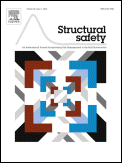
STRUCTURAL SAFETY
Innovating reliability for resilient structures.STRUCTURAL SAFETY is a premier journal dedicated to advancing the field of engineering with a focus on safety, risk, reliability, and quality in structural analysis and design. Published by Elsevier, this esteemed journal boasts an impressive Impact Factor and ranks in the top quartiles (Q1) of key categories including Building and Construction, Civil and Structural Engineering, and Safety, Risk, Reliability, and Quality. With a significant history spanning from 1982 to 2024, STRUCTURAL SAFETY fosters scholarly exchange among researchers, professionals, and students by publishing innovative and high-quality research articles that contribute to the safety and resilience of engineered structures. The journal operates without open access barriers, ensuring a broad audience can access invaluable insights in the engineering realm. Its distinguished Scopus rankings further underscore its impactful role within the academic community, making it an essential resource for anyone invested in the discipline of structural safety.

STRUCTURAL ENGINEERING AND MECHANICS
Elevating Standards in Civil and Mechanical EngineeringSTRUCTURAL ENGINEERING AND MECHANICS, a leading journal published by TECHNO-PRESS, stands at the forefront of research in the disciplines of civil, structural, and mechanical engineering. With an ISSN of 1225-4568 and an E-ISSN of 1598-6217, this South Korea-based journal has been a significant contributor to the academic community since its inception in 1994, and it continues to disseminate vital research through 2024 and beyond. Achieving a Q3 ranking in key categories such as Building and Construction, Civil and Structural Engineering, Mechanical Engineering, and Mechanics of Materials, the journal is recognized for its high standard of academic rigour and relevance in contemporary engineering challenges. Although not Open Access, it offers robust access options for institutions and professionals seeking to advance their understanding of structural systems and mechanics. Researchers, students, and practitioners in these fields will find invaluable insights and innovative studies that push the boundaries of knowledge, making this journal an essential resource for anyone invested in engineering advancements.
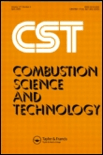
COMBUSTION SCIENCE AND TECHNOLOGY
Igniting Innovation in Combustion ResearchCOMBUSTION SCIENCE AND TECHNOLOGY, published by Taylor & Francis Inc, is a pivotal journal in the fields of Chemical Engineering and Chemistry, with a robust history spanning from 1969 to 2024. With an established impact factor and a strong reputation reflected in its Q2 ranking in both Chemical Engineering and Chemistry, this journal serves as an essential resource for researchers and professionals dedicated to the intricacies of combustion processes and energy technologies. The journal also holds commendable rankings in Energy Engineering, Fuel Technology, and Physics and Astronomy, showcasing its interdisciplinary relevance. While currently not an open-access publication, it offers a wealth of knowledge through its meticulously peer-reviewed articles, which are crucial for advancing understanding and innovation in combustion science. With a commitment to promoting rigorous research and fostering scholarly communication, COMBUSTION SCIENCE AND TECHNOLOGY is indispensable for anyone seeking cutting-edge insights into combustion phenomena and their applications in various engineering fields.
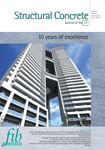
Structural Concrete
Exploring Breakthroughs in Structural ConcreteStructural Concrete, published by ERNST & SOHN, is a premier journal dedicated to the field of Civil and Structural Engineering, focusing on innovative research and advancements in concrete materials and technologies. With an impressive impact factor and a consistent ranking in the Q1 category of both Building and Construction and Civil and Structural Engineering, the journal stands as a vital resource for researchers, professionals, and students alike. It is indexed with notable Scopus ranks, underscoring its significance within the academic community. The journal spans a comprehensive scope (from 2001 to the present) that encompasses diverse topics related to the behavior, design, and application of structural concrete. Although not an open access publication, it offers valuable insights and cutting-edge knowledge that contribute to the ongoing evolution of construction practices and materials science. Structural Concrete is an essential platform for sharing pioneering findings and fostering collaboration within this dynamic field.